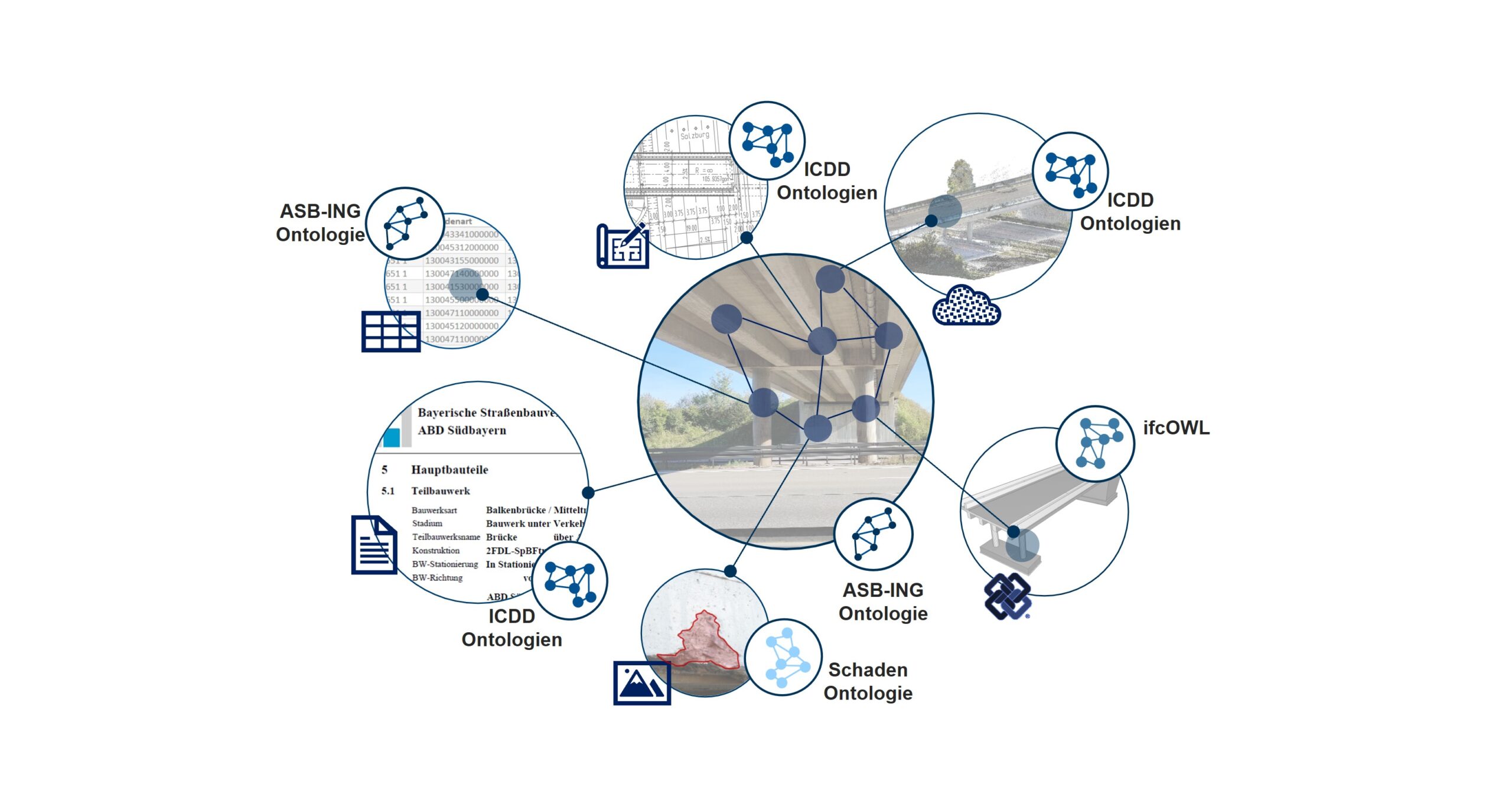
TwinGen
Technologies for generating digital twins as a basis for the operation and maintenance of structural infrastructure
Funding
Bundesministerium für Digitales und Verkehr (BMDV)
Runtime
2019- 2022
Project Description
The aim is to develop methods for the largely automated generation of high-quality digital twins of existing infrastructure structures (e.g. roads, bridges, hydraulic engineering works) as a basis for operation and maintenance. The sub-processes to be developed include the acquisition and processing of point clouds (e.g. by laser scanning or photogrammetry), extraction of geometric and semantic information using digital image processing, use of knowledge databases for semantic model generation and the evaluation of technical drawings using machine learning. A major challenge is to extract the semantic information from the as-built documentation and the as-built survey and to enrich the digital twin. Furthermore, methods are to be applied to make the condition of a building assessable on the basis of images and point clouds.
Research focus of DC
In the course of the project, the chair takes on the responsibility to make Digital Twins available, linkable and analyzable.The cross-modal, multi-media linking of previously loosely structured data sets and information is carried out with methodical approaches and technical standards of Linked Data and Semantic Web Technologies.
Research results
A central component of the research was the processing of existing, heterogeneous bridge data from proprietary database systems into open data formats of the Semantic Web, enabling the data to be interlinked. In this context, the predefined structure of bridge documentation data (ASB-ING) was transformed into an ontology. This enabled the conversion of the data sets from the construction database into the Linked Data Format.
In the second step of the research work, the converted data was linked on object-level with the results of the other work packages (point cloud, model, segmented damage pictures) and stored in a structured way in an ICDD container. On this basis, a prototypical viewer was finally developed that can display and query the semantic data from the existing database overlaid with the newly acquired 3D data.
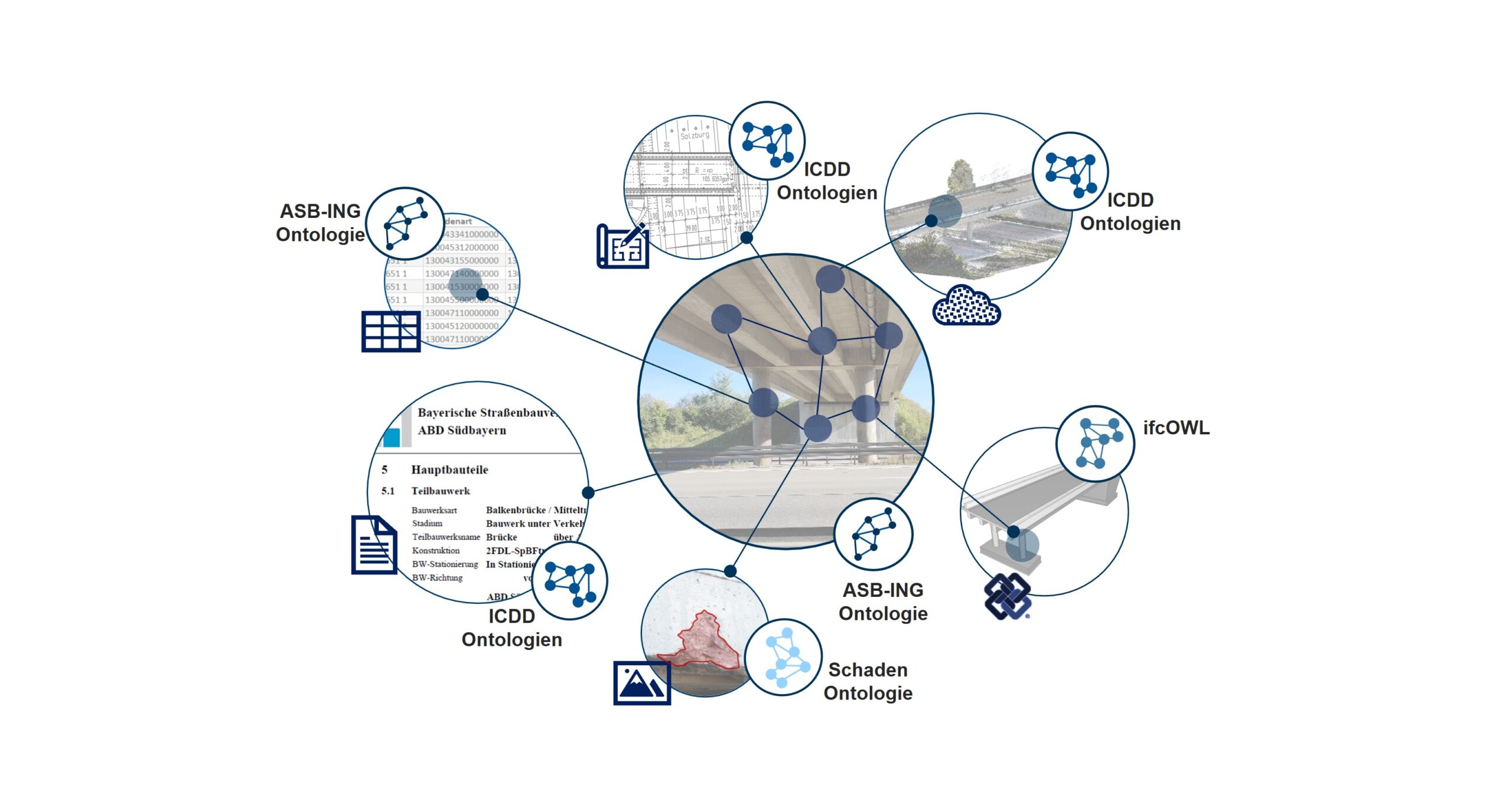
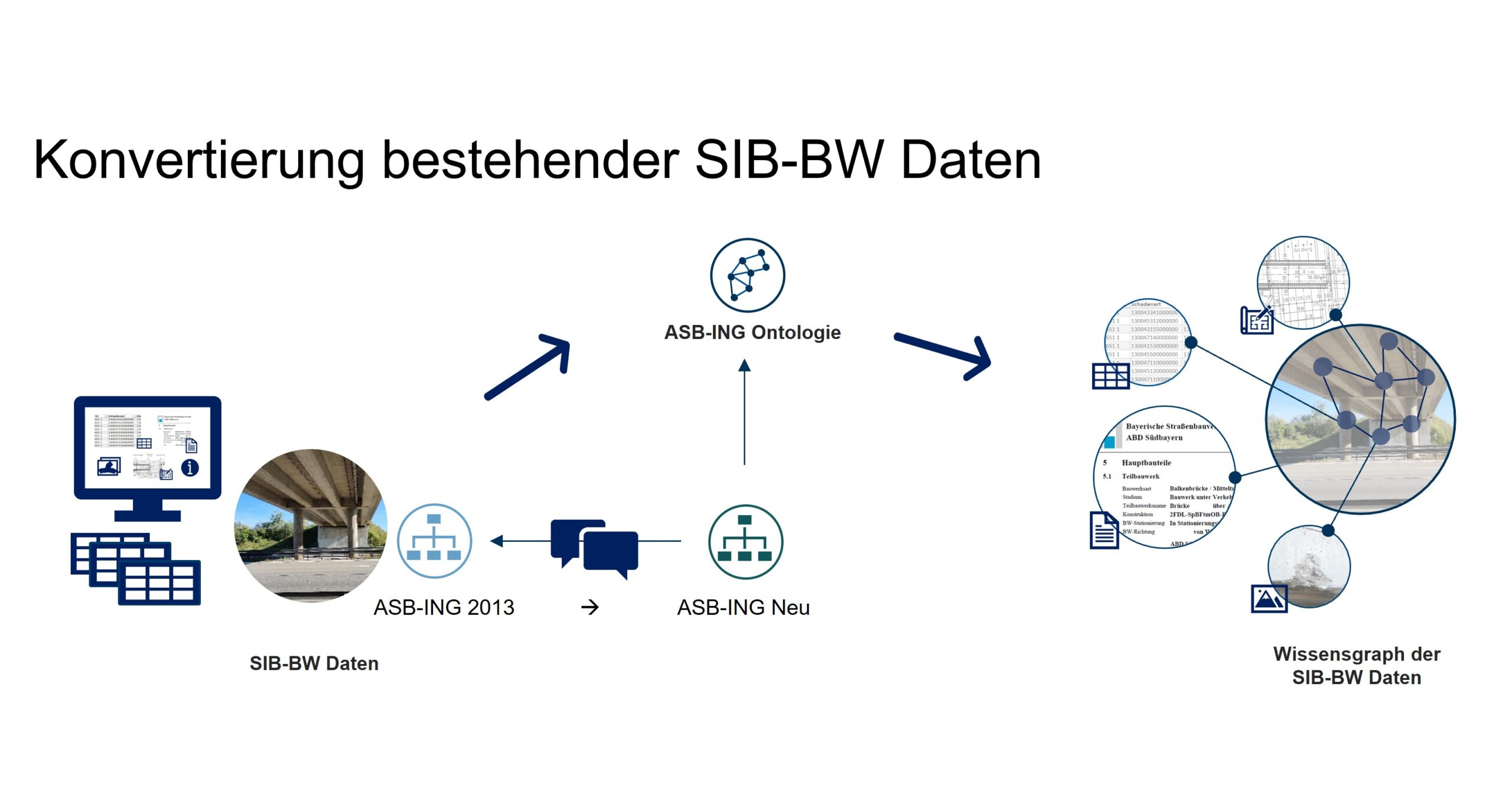
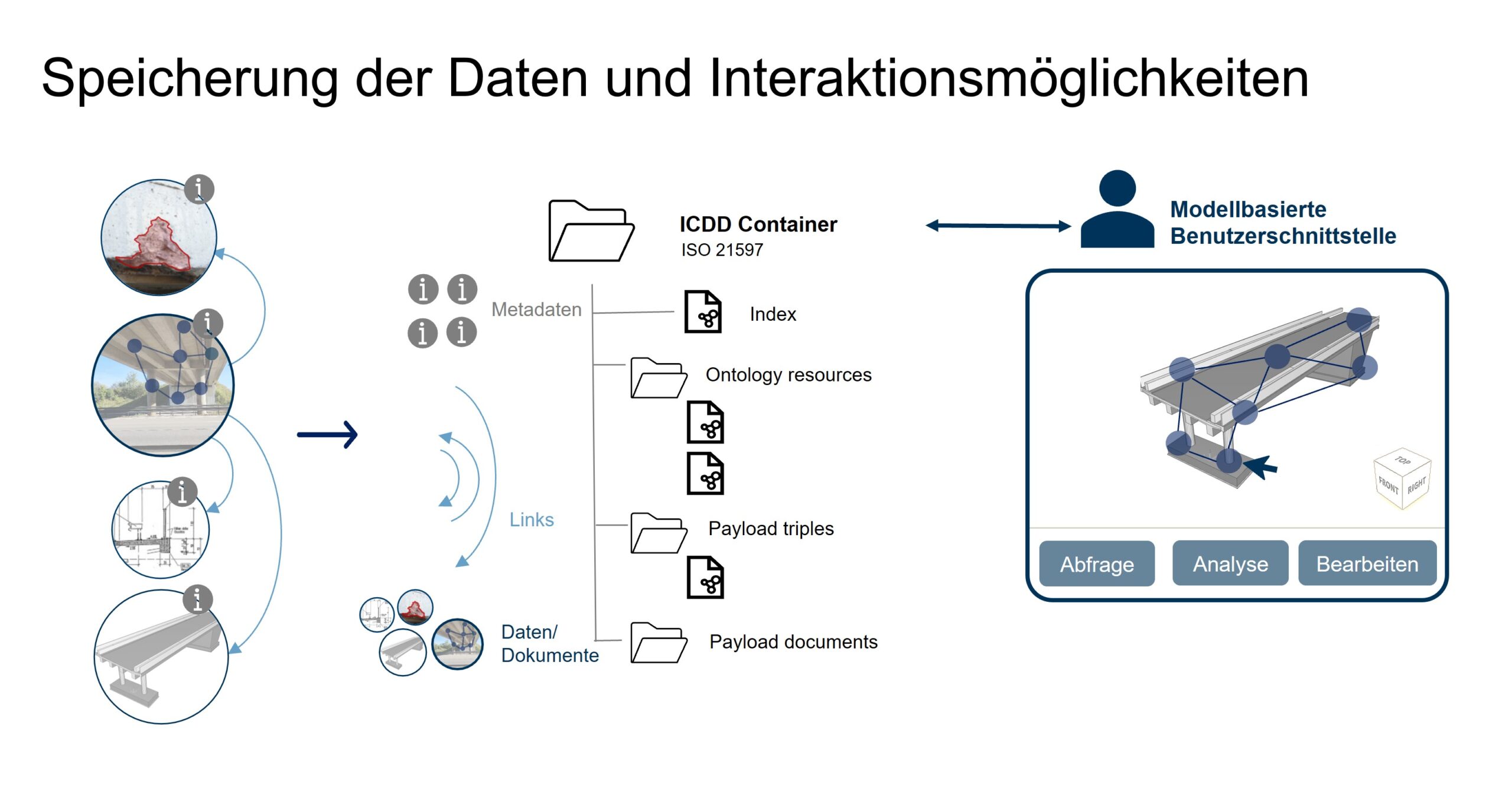
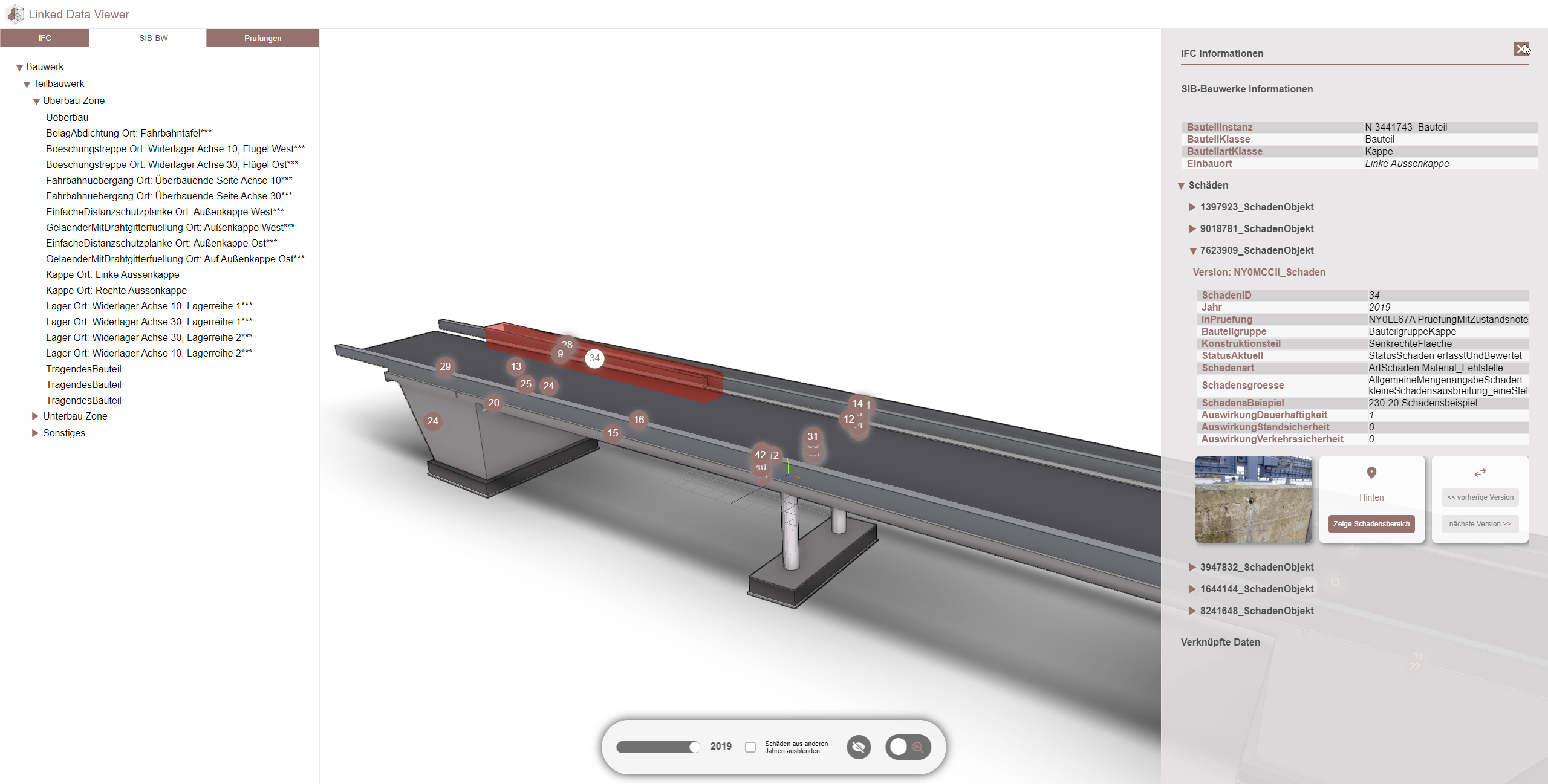
Researcher
Publications
2023
Transfer of implicit semi-formal textual location descriptions in three-dimensional model contexts Best Paper Proceedings Article
In: Proceedings of the 2023 European Conference on Computing in Construction and the 40th International CIB W78 Conference, pp. 8 Seiten, 40. International CIB W78 Conference, Heraklion (Greece), 10 Jul 2023 - 12 Jul 2023 2023.
TwinGen - Technologien zur Generierung digitaler Zwillinge als Grundlage für Betrieb und Instandhaltung baulicher Infrastruktur : Abschlussbericht Technical Report
no. DG 15 – 836.7/12, 2023.
2022
Using ICDD Containers for documentation data archives - Semi-automated creation of linked documentation data archives using an Information Container for linked Document Delivery Proceedings Article
In: [27th International Conference on Cultural Heritage and New Technologies, CHNT, 2022-11-10 - 2022-11-12, Wien, Austria], pp. 1-4, 27. International Conference on Cultural Heritage and New Technologies, Wien (Austria), 10 Nov 2022 - 12 Nov 2022 2022.
TwinGen: Advanced technologies to automatically generate digital twins for operation and maintenance of existing bridges Proceedings Article
In: ECPPM 2022 - EWork and EBusiness in Architecture, Engineering and Construction 2022 : Proceedings of the 14th European Conference on Product and Process Modelling (ECPPM 2022), September 14-16, 2022, Trondheim, Norway / edited by Eilif Hjelseth, Sujesh F. Sujan, Raimar J Scherer, pp. 213-220, 14. European Conference on Product and Process Modeling, Trondheim (Norway), 14 Sep 2022 - 16 Sep 2022 Taylor $&$ Francis Group, Milton, 2022.
Enabling object-based documentation of existing bridge inspection data using Linked Data Proceedings Article
In: Proceedings of 33. Forum Bauinformatik : 07.- 09. September 2022 / Lehrstuhl für Computergestützte Modellierung und Simulation, Lehrstuhl für Architekturinformatik, TUM ; Herausgeber: Martin Slepicka, Lothar Kolbeck, Sebastian Esser, Kasimir Forth, Florian Noichl, Jonas Schlenger, pp. 148-155, 33. Forum Bauinformatik, München (Germany), 7 Sep 2022 - 9 Sep 2022 mediaTUM-Portal der Technischen Universität München, München, 2022.
2021
Conversion of legacy domain models into ontologies for infrastructure maintenance Proceedings Article
In: LDAC2021, 9th Linked Data in Architecture and Construction Workshop : proceedings of the 9th Linked Data in Architecture and Construction Workshop (LDAC 2021), Luxembourg, October 11th-13th 2021 / Edited by María Poveda-Villalón, Pieter Pauwels, pp. 20-31, 9. Linked Data in Architecture and Construction Workshop, Luxembourg (Luxembourg), 11 Oct 2021 - 15 Oct 2021 RWTH-Aachen, Aachen, Germany, 2021.
Conversion of infrastructure inspection data into Linked Data models Proceedings Article
In: 32. Forum Bauinformatik 2021, 09. - 10. September 2021 in Darmstadt / Herausgeber: Michael Disser, André Hoffmann, Luisa Kuhn, Patrick Scheich, pp. 316-323, 32. Forum Bauinformatik, Darmstadt (Germany), 9 Sep 2021 - 10 Sep 2021 Technische Universität Darmstadt, Institut für Numerische Methoden und Informatik im Bauwesen, Darmstadt, 2021.

